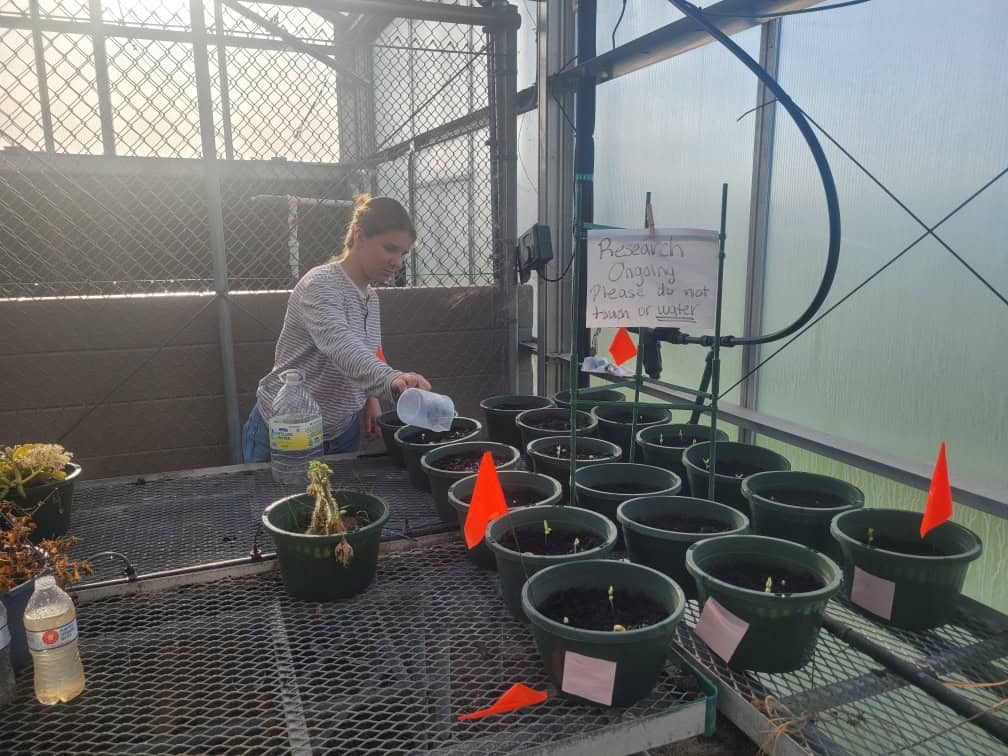
Lydia Greer of the Pearland FFA Chapter conducts her experiment in her chapter’s greenhouse.
When thinking of a Supervised Agricultural Experience (SAE), it’s common to immediately imagine showing livestock; however, it’s important to recognize that National FFA divides SAEs into six different areas. One of these areas is incorporated into its own contest: the Agriscience Fair!
Since 1998, Texas FFA has offered an agriscience fair that allows members to showcase their ability to successfully conduct an agriculture-related experiment, track results and organize them to be presented to a panel of judges. The project is ultimately displayed at the annual Texas FFA State Convention, which takes place in July.
In 2024, Pearland FFA member Lydia Greer seized this opportunity. Her experiment involved finding the effect of water pH on the growth and nodule production of “iron clay” cowpeas inoculated with B. japonicum (a nitrogen-fixing bacteria).
The experiment lasted several weeks. This period included research, finding the needed materials, conducting the experiment, gathering and organizing data and, finally, showcasing it at the Texas FFA State Convention.
Greer began by separating plants into three rows with five pots in each row. After doing so, she watered each row with one of two solutions. The first contained water and vinegar, while the other consisted of a sodium hydroxide solution. Throughout 10 weeks, the plants continued being watered with the chosen solution. After this period, the plants were measured for plant mass, plant height, root mass and nodule mass.
Once the experimental period concluded, the data was organized and presented into charts on a presentation board. A literature review was also composed following the experiment. It included the findings of prior research on inoculants, the effects of pH on plant growth and why certain pHs impacted the growth and effectiveness of rhizobacteria.
This experiment required careful planning and consistency to retrieve accurate data. This work paid off, as Greer’s project was recognized as second in its state division.
Beyond the banner won, this experiment succeeded because it allowed Greer to gain in-depth knowledge on a topic not many know about. It also helped her develop responsibility, organization, presentation and research skills that she can use in her career.
In conclusion, while the agriscience fair requires a commitment that can be time-consuming, the thousands of projects across Texas serve as a testament to how this contest is preparing FFA members like Greer to be the future of agricultural innovation.


It’s super cool to see what FFA has become. It’s not all just about animals, plants are important too! I enjoyed learning more about the agriscience fair!